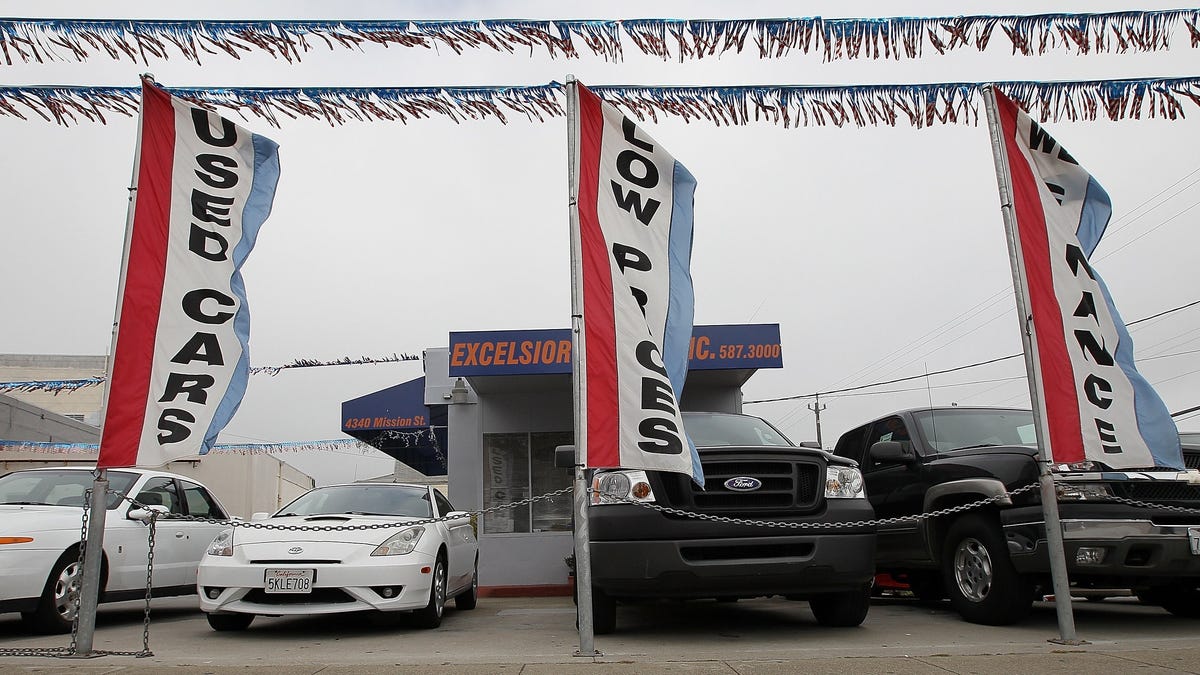How to Know You're Getting the Best Used-Car Price

Image: Getty (Getty Images)
Despite some reports of used car prices coming down, consumers are still faced with pre-owned cars that are way more expensive than anyone anticipated. In a market where inventory moves quickly and dealers rarely budge on price, here’s how you can figure out if you’re getting a fair deal.
In this bonkers used car market, buyers need to understand that a “deal” is relative to what’s available and the price spectrum your desired vehicle falls in. Forget about what you paid for a certain car a few years ago — everything is more expensive now.
You should mostly ignore the “savings” a dealer says you’re getting. I would also caution you against getting hung up on what a third-party pricing website like KBB or Edmunds says you should be paying for a certain car. These sites can provide some helpful guidelines in terms of general price ranges, but the reality is, a car is worth what someone is willing to pay. Just because your target car has a retail price above what the guidelines say, that doesn’t automatically mean it’s a bad deal.
One of the best methods I have found over the years is to examine a vehicle listing in relation to other comparable vehicles in the same region.
Screenshot: Autotrader.com
G/O Media may get a commission
24% Off
Braun Electric Razor for Men
Clean
Has a special flexible head to hit everywhere you need it to, has a variety of different functions to use to fit your preferred style, and is designed to last seven years.
As you can see, the prices are pretty similar across most of the listings given the mileage, but let’s compare the two listings below.
Screenshot: Autotrader
Both cars are 2019 Nissan Rogues with the Premium Package, but the car at Millenium Chevrolet has about half the mileage for only $74 more. On the surface, that makes this car a better value. However, advertised prices don’t tell the whole story. Dealers have been “gaming” the online pricing system for a while, even before the inventory mess. They’ll advertise a market-competitive price, only to add in a bunch of bogus fees that make the total price less competitive. This is why it’s critical to request a complete out-the-door number from a dealership, so you can make an accurate comparison.
Of course, where this approach gets difficult is when you’re comparing models with varying levels of equipment. This is often the case with luxury cars and pickup trucks, where you may have vehicles that are visually similar and may even be the same “trim,” but could have substantial differences in their original MSRP. This is when it’s very helpful to have access to the vehicle’s original window sticker or build sheet. Brands like Volvo, Stellantis, and Hyundai do a great job of embedding these window stickers into Carfax reports. There are also third-party websites like VinAnalytics that can provide build sheets and original MSRPs for higher-end vehicles like Porsche and BMW.
In addition to looking at the year, mileage/warranty balance, price, and equipment, another factor is distance. Casting a wide net will give you more inventory to choose from and potentially a better value, but you will want to balance the travel/transport costs of getting that car versus buying local.
Where a lot of buyers get frustrated is when they feel the need to get into a back-and-forth negotiation on a car that is already priced appropriately for the market, then that vehicle gets snatched up by someone else. If you are unsure whether or not you have a competitive deal, ask yourself this question: Can I find a car of the same model year or newer, with similar miles and equipment, for less? If the answer is no, you probably found your deal, and you should act fast.
Tom McParland is a contributing writer for Jalopnik and runs AutomatchConsulting.com. He takes the hassle out of buying or leasing a car. Got a car buying question? Send it to Tom@AutomatchConsulting.com



